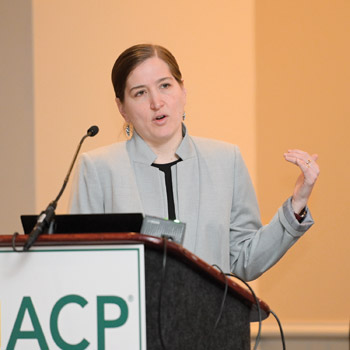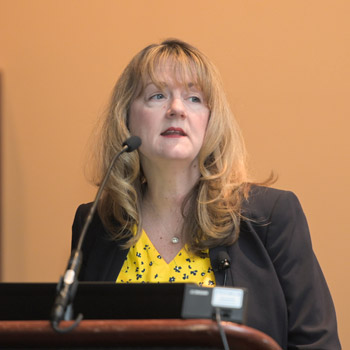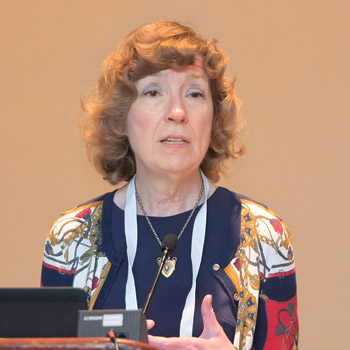Will Medicare's new primary care models be a game-changer?
New reimbursement models will begin the transition away from fee-for-service to risk-adjusted capitation payments, known as Primary Care First Model Options.
The Department of Health and Human Services (HHS) unveiled in April new alternative payment models that it hopes will “transform” primary care to support high-value care. Released at a briefing hosted by the American Medical Association and attended by me and other ACP officials and members (and hundreds of other “stakeholder” groups, plus the news media), the proposals would create more voluntary options for primary care physicians and their practices to be paid for keeping patients healthy and out of the hospital.
That the agency considers these new models to be potential game-changers was evidenced by the top-ranking officials present at the launch: HHS Secretary Alex Azar, CMS Administrator Seema Verma, and Deputy Administrator and Director of CMS's Center for Medicare and Medicaid Innovation Adam Boehler. Mr. Boehler stated that the agency's goal in introducing the new models is to “dismantle” fee-for-service payments.
The new models don't go quite that far, although they will begin the transition away from fee-for-service to risk-adjusted capitation payments. Primary Care First Model Options “will focus on advanced primary care practices ready to assume financial risk in exchange for reduced administrative burdens and performance-based payments,” according to an April 22 CMS Fact Sheet. The other set of model options, called Direct Contracting (DC), is directed at large systems that have the experience and capabilities to take on substantial financial risk for large numbers of patients.
Primary Care First (PCF) is expected to be available to far more internists than Direct Contracting. According to CMS, Primary Care First practices will be paid under a “simplified payment structure.” Each practice accepted into the program will receive a risk-adjusted per beneficiary per month (PBPM) payment, plus a flat $50 for each office visit. Each will get a performance-based incentive to reduce costs and improve quality, assessed and paid quarterly, CMS said. A different, and higher, payment structure will apply to PCF practices that agree to treat seriously ill patients currently lacking a primary care practitioner, as described below.
Depending on the risk score of the patient population seen by a practice, the PBPM payment would range from $24 (lowest-risk patient population) to $175 (highest-risk patient population). While the PBPM payment would be assessed based on the total risk of the patient population seen by the practice, determined retrospectively by looking back at last year's health status of beneficiaries seen, the per monthly payments per beneficiary would be the same, that is, not vary based on an individual patient's health risk score. The monthly payments would be adjusted for patients seeking services outside the practice. Practices that agree to take on seriously ill patients not currently seen by a primary care physician would receive $325 PBPM for their first visit with the patient, and $275 PBPM afterward for each seriously ill patient for the next 12 months. On a quarterly basis, PCF practices could receive performance-based payments of up to 50% of their total primary care Medicare revenue, if they meet or exceed certain quality metrics including preventing avoidable hospital admissions, or a maximum 10% downward adjustment if they are unable to meet the required metrics.
CMS believes that PCF will appeal to a wide range of primary care physicians and their practices, including those in small and solo practices, because the risk-adjusted PBPM payments will provide them with predictable revenue each month, with limited downside risk (maximum 10% reduction) and substantial upside potential gains (50% of revenue). Administrative burdens will also be less, because the flat office visit fee eliminates the need to document different levels of office visits. Administrative burdens might also be reduced if PCF practices only have to report on a more focused set of quality measures.
To be eligible to participate in PCF, a practice must include primary care practitioners, defined as MDs, DOs, CNSs, NPs, and PAs, who are certified in internal medicine, general medicine, geriatric medicine, family medicine, or hospice and palliative medicine. A practice must also “have experience with value-based payment arrangements or payments based on cost, quality, and/or utilization performance such as shared savings, performance-based incentive payments, and episode-based payments, and/or alternative to fee-for-service payments such as full or partial capitation,” according to CMS. And it needs to be located in one of the 26 regions selected for the program (the complete list of regions, and other information about the program, is available on CMS's website).
Will eligible primary care physicians and their practices find these models attractive? It's too soon to tell.
As ACP observed in a generally supportive April 23 statement, elements of PCF suggest that CMS is on the right track. A variety of payment and delivery models are offered that support internal medicine and primary care practices, from smaller and independent practices to larger integrated ones; there is a range of risk options available to practices; and the new model options aim to reduce administrative burdens, potentially allowing physicians to spend more time with patients.
However, the details will likely determine how many physicians and practices will seek to participate. Also, unless other payers join Medicare in supporting PCF practices with a simplified payment structure and more focused measures, practices may not experience the predictable revenue and reduction in administrative burdens that CMS anticipates. Presumably, CMS will be releasing more information soon, prior to the enrollment period it intends to begin this summer.
ACP concluded its statement with a note of caution. “The success and viability of these models will depend on the extent that they are supported by payers in addition to Medicare and Medicaid, are adequately adjusted for differences in the risk and health status of patients seen by each practice, are provided predictable and adequate payments to support and sustain practices (especially smaller independent ones), are appropriately scaled for the financial risk expected of a practice, are provided meaningful and timely data to support improvement, and are truly able to reduce administrative tasks and costs, among other things.
“ACP will continue to evaluate the new payment and delivery models based on such considerations, and we look forward to working with CMS and to continue advocating for ways to support the value of primary care for physicians and for all patients across the health care system.”
How big a game-changer all of this will be depends on how many primary care physicians elect to apply and are accepted; their actual performance in the program; and, most important, whether care of patients improves as a result. The potential is there, but it will be some time before we know for sure.





